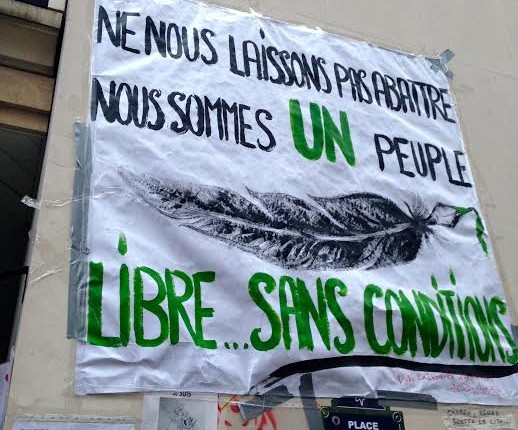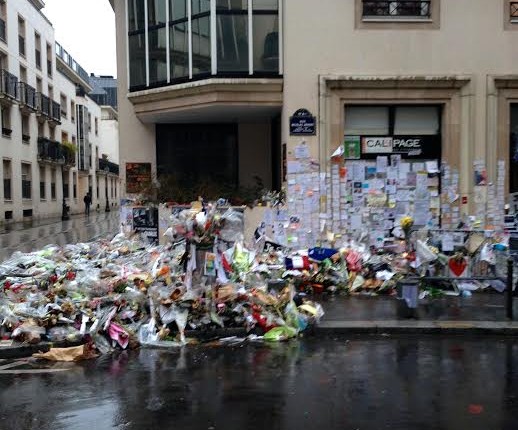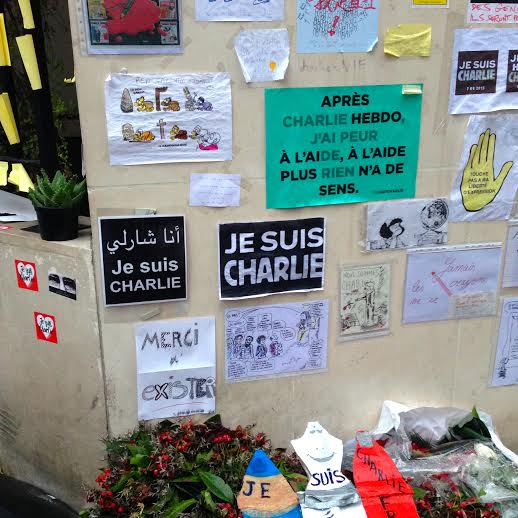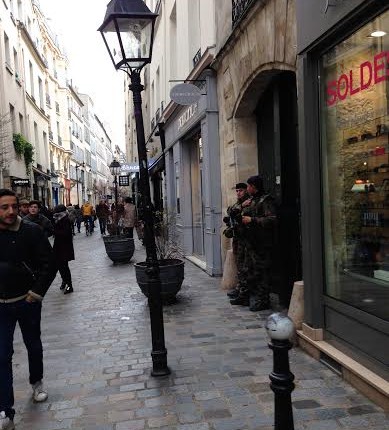C’est la vie: Paris after Jan. 7
“So, what’s like Paris…now?”
Of all the questions I get from my friends and family back home about my study abroad experience, this one is undoubtedly the most common — and I don’t blame them. From the large displays of flowers and pens to the occasional “Paris est Charlie” poster hanging from the city’s walls, it’s hard not to recall the tragic events that momentarily drew the world’s attention to France on Jan. 7, 2015. Even after living in Paris for a little over a month now, I’m still hard pressed to walk a city block without seeing at least one cafe or shop without the popular #JeSuisCharlie slogan hanging from its window.
But overall, Paris isn’t in a state of shambles or chaos as some may seem to think. In fact, the magnitude of what had happened here still didn’t feel quite as real until I visited the site for myself last weekend. Charlie Hebdo’s offices are located in the 11th arrondissement, a mere few blocks away from where my classes are held (and where I’m typing this blog now). Though normalcy has returned to the busy city streets surrounding the site, the inner streets where the offices stand tell a different story. Outside the offices, the sidewalks are littered with memorials composed of flowers, candles and signs — visual signs of solidarity so well preserved one would think they had just been laid there.
What struck me most about Paris following the tragic attack, however, wasn’t the signs or even the increased security around monuments and museums. Rather, it was the sight of French police — often in groups of three or four sporting camouflage uniforms and armed with large assault rifles — stationed in public spaces and around the city’s many mosques and synagogues. These heavily armed soldiers have since become fixtures on the streets of Paris, serving as a jarring reminder of what occurred more than a month ago. Though the sight of armed police patrolling the streets does give an air of security, their presence is still nonetheless alarming.
But perhaps what made this sight even more disturbing to me was the way in which it mirrored my experiences walking around the holy and haughtily contested city of Jerusalem less than a year ago. The presence of armed guards patrolling the city streets is an unfortunate norm in Israel-Palestine — but it’s certainly not something I’d expect to see in the heart of Europe.
A photo of French police forces stationed outside a synagogue in the Marais (4th arrondissement):
Nonetheless, to get back to the original question — what is Paris like now? Well, Paris is… Paris. The streets are still bustling, the metro is still packed and the popular tourist sites are just as crowded as ever. If the aftermath of January 7 has taught me anything, it’s that such tragic incidents force us to address what occurred and, perhaps most importantly of all, figure out a way to move forward.
Though visual signs of solidarity and security serve as much needed reminders of what happened and the necessity to ensure that it never happens again, Parisian life has nonetheless continued — as it should. C’est la vie.




